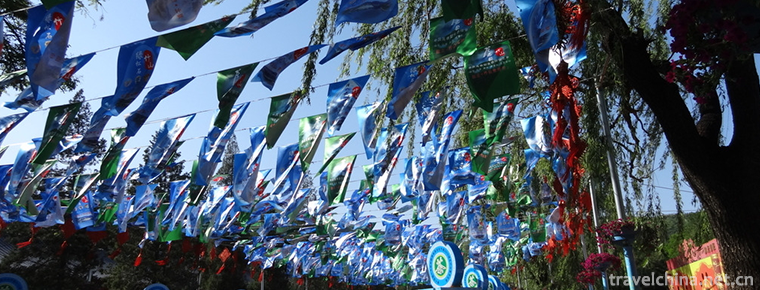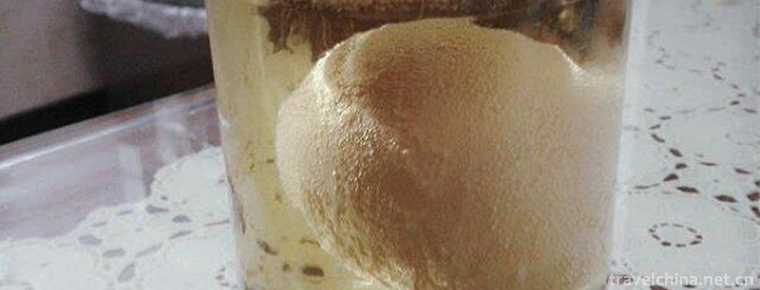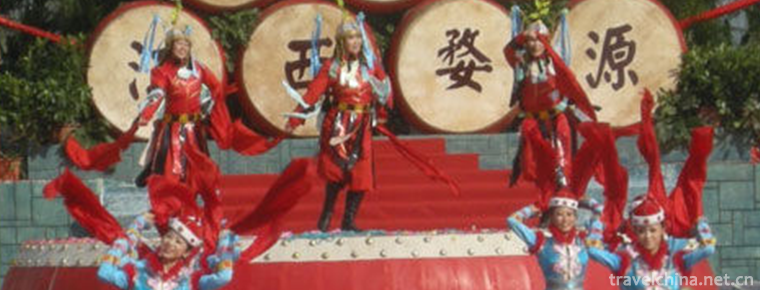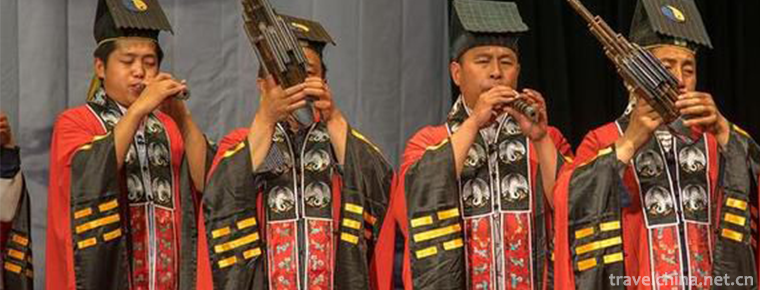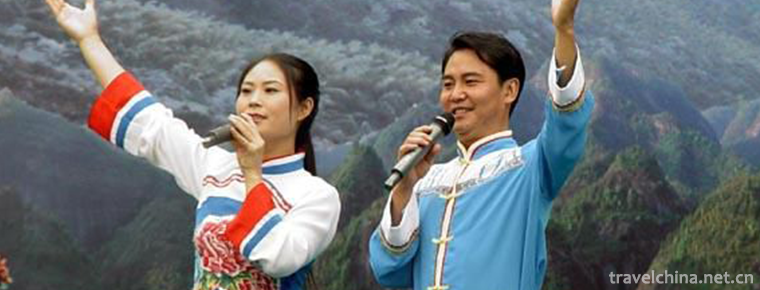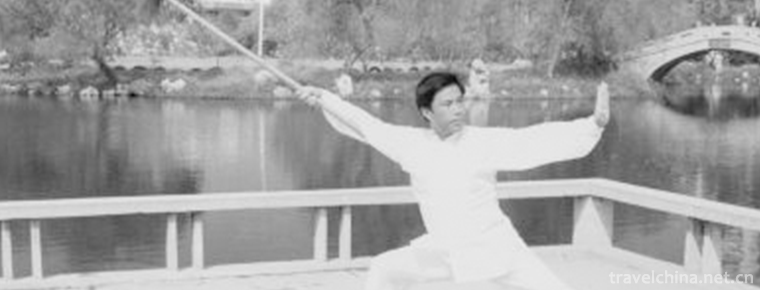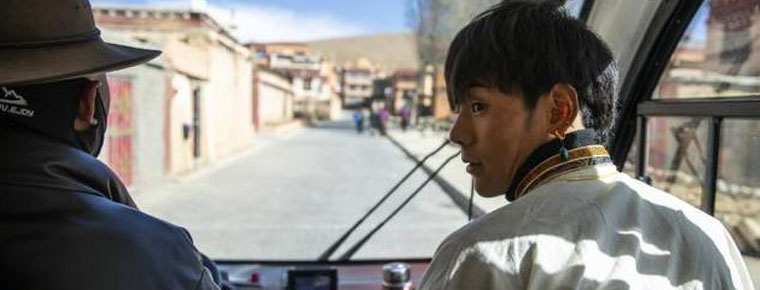Tibetan Thangka
Tibetan Thangka
Tibetan Thangka, also known as Tangga, is a transliteration of Tibetan language. It is a scroll painting mounted on satin fabrics. It is a kind of painting with Tibetan cultural characteristics. The core and mounting of Thangka are inseparable from the achievements of agricultural civilization such as cotton, hemp, silk and silk. "Thangka" painting originated from temples, and its inheritance history is directly related to the teaching of Xidiangang College in Labrang Monastery, Gannan, which belongs to the pure religious affairs of teachers and apprentices. Thangka painting has distinct national characteristics, strong religious color and unique artistic style. It has certain social value and academic value for the study of Tibetan folk and religious arts in China, and has the value for the world to appreciate and collect.
In 2008, it was selected as the first batch of national intangible cultural heritage expansion projects.
Historical origin
Gannan belongs to Anduo Tibetan area. Because of its geographical relationship, the local Tangka painting techniques are deeply influenced by the artistic style of the Han Dynasty. However, after all, the Gamagong School of Painting was a prevalent school in the 16th century. At present, Mian Tang School and Mian Sa School represent the new development level of Tangka's painting art.
Thang-ga, also known as Tangka, is a Tibetan transliteration, referring to religious scroll paintings mounted with colored satin and suspended for worship. According to textual research, the form of Tangka is related to the life experience of nomadic tribes. Tibetans live on the vast and desolate plateau, wrapped in a roll of Tangka, which becomes a temple with them.
Inheritance significance
In June 2008, it was selected as the second batch of national intangible cultural heritage list.
Gannan Tibetan Autonomous Prefecture in Gansu Province is rich in Tibetan culture. Today, seven local folk cultures have been listed in the national intangible cultural heritage protection list, Gannan "Tangka" is one of them. The composition of Gannan Tibetan "Thangka" painting is very unique. The whole picture is not limited by space, earth, ocean and time. In a very small picture, there are heaven, earth and earth boundaries. It can also skillfully use the deformed rocks, auspicious clouds and flowers to form a continuous pattern and divide the plot naturally to form a vivid and interesting legendary picture which is both independent and coherent. Gannan Tibetan "Thangka" painting has distinct national characteristics, strong religious color and unique artistic style. It has certain social value and academic value for the study of Tibetan folk and religious art, and also has the value for the world to appreciate and collect.
"Thangka" painting originated from temples, and its inheritance history is directly related to the teaching of Xidiangang College in Labrang Monastery, Gannan, which belongs to the pure religious affairs of teachers and apprentices. Gannan "Thangka" is mostly painted on pure cotton cloth, but also on sheepskin. It has silk embroidery and silk seam or plate printing. It is trimmed with various colors of silk and satin, covered with thin silk and decorative ribbons, and has brass and silver decorative wooden axles at the bottom for roll-up exhibition. The size of the pictures varies from tens of square meters for the larger ones to less than 0.1 square meters for the smaller ones. Its paints are mostly broad material and gold and silver.
Buddhist meaning
Thangka is the most common religious painting - Buddha statues, the general central position is to depict the main characters, starting from the top corner of the picture, around the central characters, clockwise with the central figures related to the characters, venues or stories filled a week. Each axis of Thangka generally depicts a more complete story. The scenery of the picture changes with the need of the story plot and is not limited by history, time and space. The characters in the picture are not affected by the perspective relationship between far and near, so they are arranged vividly. They unite the whole picture on the major keynote and make the composition very complete. Some Thangka area can generally reach tens or even hundreds of square meters, the composition is very complete, very spectacular.

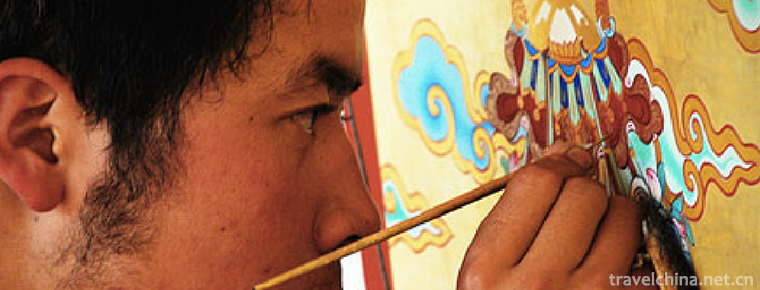
-
Baishuiyang Yuanyangxi Tourist Area
Baishuiyang Mandarin Creek is located in Pingnan County, Ningde City, Fujian Province. It is 170 kilometers away from Fuzhou and 101 kilometers away from Ningde.
Views: 170 Time 2018-12-08 -
Badachu Park
Located at the south foot of Beijing's famous Xishan scenic spot, Badadu Park is a national AAAA-level scenic spot. It is the first batch of key cultural relics protection units in Beijing after the f.
Views: 115 Time 2018-12-24 -
White vinegar egg
Cuisine and efficacy: Heart-regulating diet, insomnia diet, palpitation diet, brain-tonifying diet.
Views: 348 Time 2019-03-24 -
Drum Dance
Dance and drum dance is a kind of folk dance of Miao nationality in China. Miao people's "encouragement" has a long history. The written records of Miao people's drumming.
Views: 130 Time 2019-05-01 -
Sheng Guanyue in Jizhong
Jizhong Sheng wind music is popular in Jizhong Plain, that is, south of Beijing, west of Tianjin, north of Cangzhou and Dingzhou frontline nearly 30 counties and cities of traditional drum music varie.
Views: 303 Time 2019-05-05 -
Xingguo Folk Song
Xingguo Folk Song has a long history. It is said that it was sung by woodcutters who built A Fang Palace in Xingguo in the late Qin Dynasty. Xingguo folk songs are lively, diverse in form and full of .
Views: 110 Time 2019-07-08 -
Yuejiaquan
Yuejiaquan is one of the traditional Chinese boxing which has been handed down completely in China. It was founded by Yue Fei, a national hero, according to his own learning and combating with the ene.
Views: 152 Time 2019-07-16 -
Red Army ferry scenic spot in Cangxi County
Cangxi Red Army ferry is located in Cangxi County, Sichuan Province. There is an ancient ferry by the Jialing River in Tashan Bay 3 km southeast of Cangxi city. Close to the mountain and by the water, the terrain is very dangerous, the rocks are steep, and the trees are green. Jialing River from north to south, beautiful scenery..
Views: 305 Time 2020-11-08 -
Ding Zhen first salary to buy washing machine and battery car
Ding Zhen's first salary to buy a washing machine battery car, do not want her mother's hands frozen.
Views: 108 Time 2020-12-06 -
Population of Deyang
By the end of 2018, the total number of households in Deyang was 1 million 575 thousand, and the total registered residence population was 3 million 870 thousand. Among them, there were 1 million 242 thousand urban residents and 2 million 629 thousand rural population.
Views: 318 Time 2020-12-14 -
Guangyuan secondary industry
In 2018, the total industrial added value of Guangyuan was 30.018 billion yuan, an increase of 9.4% over the previous year. The contribution rate of industry to economic growth is 44.3%, which drives economic growth by 3.7 percentage points..
Views: 329 Time 2020-12-15 -
Suining secondary industry
In 2019, the city's industrial added value will reach 49.158 billion yuan, an increase of 8.7%, contributing 50.7% to economic growth, and boosting economic growth by 4.1 percentage points. The number of Industrial Enterprises above Designated Size reached 573.
Views: 350 Time 2020-12-16

